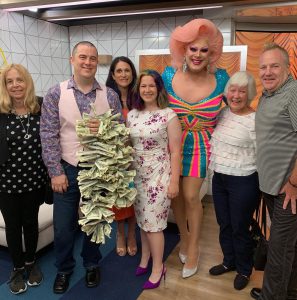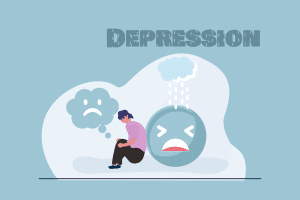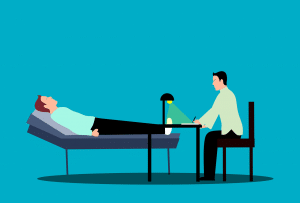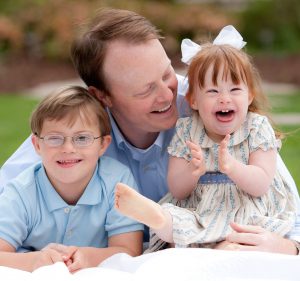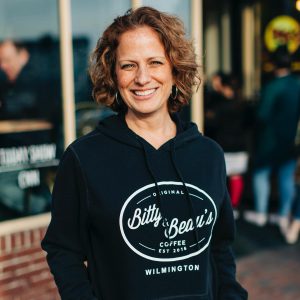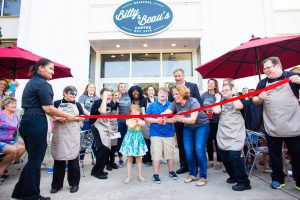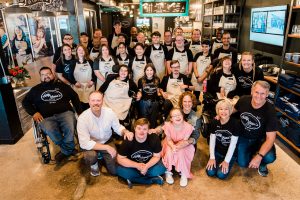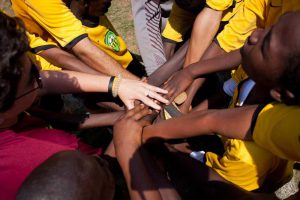It’s every parent’s worst nightmare: losing a child. No matter how it happens, it will haunt any parent that experiences this loss for the rest of their lives. But this Suicide Prevention Awareness Month, we need to look directly in the face one of the most haunting ways to lose a child, and recognize that it’s happening to far too many families in this country.
Unfortunately, Michelle Anderson, and her husband Josh, have had to stare the specter of youth suicide in the face for the last six years, after their son JJ died by suicide at the age of just 12 in February of 2016. For most of us, if we’re forced to think about such a tragic situation happening to us, we might imagine that we’d collapse under the weight of the grief, and struggle to find ways to move forward – and that is totally understandable when faced with something that is so, well, un-understandable.
But for the Andersons, the loss of their son was a call to action, and not a time to look away. They turned their grief into action, in the hopes that other parents would not have to experience the unthinkable, and started their organization, JJ’s Hello Foundation, to educate parents, educators, and young people on the stark reality of youth suicide. We spoke to Michelle Anderson, and she graciously shared her story, so that we can all benefit from her wisdom and action.
“There Was Nothing Out There at All”
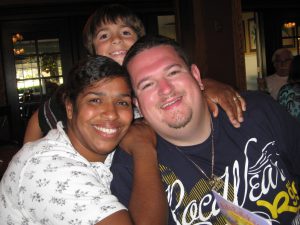
The Andersons did have to experience that unthinkable reality of youth suicide – and the aftermath was not only devastating, but confusing and disheartening. During their time of overwhelming grief, they had nowhere to turn, and couldn’t find what they needed to get through that terrible time: “While we were in the hospital with him, we had no resources,” Michelle told us. “We were trying to figure out where to go, how to move forward, and trying to figure out what can help us, as far as the family and dealing with the loss at the time. So we were just sitting there, and we realized there was nothing out there at all. And with our son being so young, of course they have the suicide hotline, but that was still kind of geared toward older people.”
The situation they were in spurred the Andersons to head online, but not simply to search for help for themselves. They were determined to find out what was out there, and when they were dissatisfied with what they found, they created something. They decided to start JJ’s Hello Foundation – but not just to support survivors. Their goal was also to pick up the slack when it came to resources for and about young people at risk for suicide.
And that’s because it wasn’t just that they couldn’t find resources after the worst had happened. They found out first-hand that there are far too many kids out there who are struggling, and aren’t getting the help they need. In fact, JJ taught them that, not only because of the way he died, but because he knew the real depth of the problem around him.
While the Andersons had been originally baffled as to why JJ took his own life – he wasn’t being bullied at that time, he was a straight-A student, and was involved in his school and community – they found out later that it was because of his desire to help the kids around him, kids that weren’t truly being seen or heard.
So for the Andersons, JJ’s real legacy is not the way that he died, but the way that he lived: after he died, his parents found out that he had been trying to be a one-person mental health resource for the kids around him. According to Michelle, “A lot of people think that these kids take their lives because they’re being bullied, or you know, but that wasn’t the case with our son – [we found out] after he passed that it had more to do with taking in other people’s issues and problems. So it kind of put everything together for us…he was carrying a lot of other stuff for kids in his peer group – girls who were being molested by family members, LGBTQ kids who couldn’t come out to their parents… So he kind of mentored them through all that, and then he didn’t have an outlet. So with all that in mind, we decided to start the foundation so that we would be able to help teens that are needing those kinds of resources and help.”
“It’s Mind-Blowing”
So how big is the problem? Bigger than most of us would like to think about – and probably scarier when it comes to who is at risk. According to Michelle, “…[O]ne of the saddest things right now is the age range – it’s from 8 to 17, there’s very high numbers of suicides. It’s eight now. It’s very mind-blowing.”
What’s just as mind-blowing is the fact that suicide is now the second leading cause of death for middle and high school students (ages 12-18), and for young people ages 18 – 22. Overall, suicide is the second leading cause of death for people ages 10 – 24. All of this means that, according to JJ’s Hello Foundation’s website, “More teenagers and young adults die from suicide than from cancer, heart disease, AIDS, birth defects, stroke, pneumonia, influenza, and chronic lung disease, COMBINED.”
This is actually an alarming trend, not something we’ve just always dealt with: suicides among children ages 10 -14 have doubled since 2006. And almost 4,000 high school students are attempting suicide every day (we don’t have the numbers for younger children, but the number would be much higher if we did) – so it’s clear we need to act. But what can we do? Well, with 4 out of 5 teens who attempt suicide giving warning signals before they do so, it sounds like we need to all be paying more attention, to be seeing and hearing the kids in our lives – and JJ’s Hello Foundation is trying hard to teach all of us how to do that.
“When People Are Living That, They Need to Know They’re Not Alone”
Despite these dizzying and discouraging statistics, the Andersons are not giving up. While their foundation has multiple projects – including putting together and distributing mental health kits for young people and co-running an online suicide loss survivors support group – what they seem most proud of is the work they do directly with young people and adults who could be affected by suicide.
Their foundation goes into schools, who generally reach out to them, especially after a parent has lost a child or a child has attempted suicide, and speak to the kids, the parents, and the educators, so everyone can feel like they’re in things together. They talk about how adults and kids can recognize signs of depression and suicide, and how important it is to make sure everyone is seen and heard, as well as how important it is to speak up – not only if you’re struggling, but if someone else is. That’s JJ’s legacy.
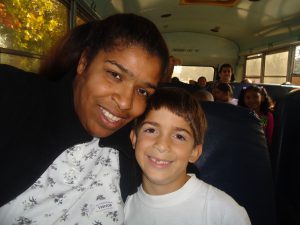 “We go in and we tell them, as parents that lost a child to suicide, we explain to them in hindsight what we learned, what we wish we would have known. It’s one of those things where you don’t think, as a parent, that your child even knows about suicide.”
“We go in and we tell them, as parents that lost a child to suicide, we explain to them in hindsight what we learned, what we wish we would have known. It’s one of those things where you don’t think, as a parent, that your child even knows about suicide.”
They take questions and comments, and also want to be there as another resource to get the kids at the school the help they need. “I can see certain expressions on certain kid’s faces,” Michelle said, “because we’re also mental health first-aiders, so we can see whenever there are a couple of students who could be struggling, we kind of see it.”
The most important thing, for Michelle, is that they’re there, not just talking, but also listening, as well as making it clear that this happened to them, and it can happen to anyone. Most importantly, they need people to understand that no one is ever alone in their struggles.
“My biggest thing is that there are a lot of parents and people who are struggling with someone that’s depressed, that’s contemplating [suicide],” said Michelle, “…so when those people are living that, they need to know that they’re not alone. There are other people – a lot of people out there – that are dealing with a family member, or a child, that is also going through a lot of mental health issues. And I think the biggest thing is the stigma – people are scared to talk about it, and they need to be able to open up.”
And the stigma goes both ways: while we often focus on the stigma that might make it difficult for those experiencing mental health issues to open up, parents who have a child who is struggling might also feel that there is a stigma surrounding having a child experiencing mental health issues, and might find it difficult to open up about what their child is going through. But Michelle urges parents to speak to their child’s school if they are concerned, and not stay silent: “Always start with the school: the school is that child’s second parent,” she says.
“To the World You Are One Person, to One Person You Are the World”
The Andersons are out there, in the trenches, doing amazing work. They are continually opening up about the nightmare they went through, but for Michelle, that doesn’t rip the wounds open, it helps to heal and move forward. She wants us to know that talking about it can help you, but it can also help those around you, who might also be struggling, or need to know what they can do:
“Talking about our son and everything we went through is kind of really therapeutic,” she said, “and it also – I’m one of those people that’s very straightforward, I’m not shy, I’m not scared to say things – so being able to talk about it, and knowing that people are actually hearing what I’m saying, and not just listening, I think it makes a world of difference…[Talking about it] also reassures us that what we’re doing is working, it’s positive, it helps us to help others.”
But Michelle points out that she’s only one person, and her organization is only one small foundation, no matter how impactful it is. She urges us, as parents and as parts of communities, to do our small parts with the people in our lives – our families and the strangers around us.
When it comes to our roles as parents, she told us: “I think it’s important that we, as parents, make time – not find time – make time, because if you’re looking for something, you’re never going to find it….Even if it’s an hour, or even if it’s on the way to school, or the way home from school, just like 15-20 minutes, but that’s enough time to show your kids that you see them, and that you’re there for them…Just talk to them, let them know that you’re listening, and let them know that they mean the world to you. That’s one of our mottos: ‘To the world you are one person, to one person you are the world.’ And we are our children’s world, so we need them to know they’re a big part of our world, and we’re here for them.”
In addition, anyone, any adults that have contact with children, can be there the way that the Andersons are, just in smaller ways by “Just talking to them and letting them know that there are other choices. For them not to be scared to speak – talk to their parents, talk to their teacher.”
And she wants us to remember: it’s us, the adults, who model how children find their places in the world, and we need to step things up. “I can see why kids are going through what they’re going through, said Michelle, “because if we don’t show that we care, why should they?”
“Say Hello, Save a Life”: JJ’s Legacy
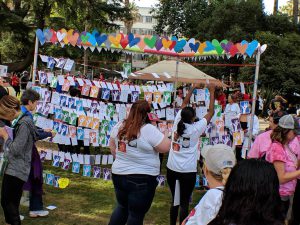
Finally, we’ll leave you with where JJ’s Hello Foundation got its name, and a little about the boy who sparked the whole thing. Michelle told us, “JJ, well, he really fell in love with the word ‘hello’. And when the song came out from Adele, he took it into a different context, and not as what she was singing about. So to him, it’s ‘hello’ to be seen, so we figured because he talked to everybody [that was a fitting name]…he didn’t care who you were, if you talked to him, he would hold a whole long conversation with you, he would help you with anything that you needed…”
So, to honor his legacy, the Andersons are carrying on his mission to help others and to make them feel seen – and, as Michelle says, “To be quite honest, I think the one thing everyone can all do is show kindness, and all you have to do is to say ‘hello’. Say hello, save a life…just to say hi to someone lets them know, “I see you, and I appreciate you.’”
If you, or someone you know, especially a young person, needs help, please reach out and use one of the following resources:
- National Suicide Prevention Crisis Line – 1-800-273-TALK (8255) or Text “Hello” to 741-741
- Crisis Chat – http://Crisischat.org
- I’m Alive (Online Crisis Chat) – http://www.imalive.org
- The Trevor Project (LGBTQ specific hotline) – 1-866-488-7386
And if you’d like to help JJ’s Hello Foundation with a donation of either money or supplies for their mental health kits, head here.
One final note: Michelle shared with us that her vision for the future of the foundation is a center for children in crisis, since right now in California where they are, kids with mental health issues are put in one little part of the hospital, or are being sent to other parts of the country for help. We wish them all the luck in their endeavors, and hope you will check out the work they are doing, and help if you can. Stay well out there, listen to each other, and if you’re a parent, hug your kids extra tight – we know we will do just that.
Co-written by Joanna Bowling

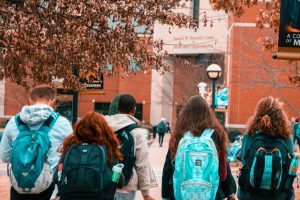



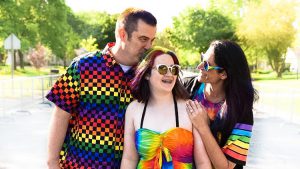 Molly gives a lot of credit to her parents, Carolyn and Bob Pinta (who helped her co-found the Pinta Pride Project), for the empathy and predisposition to activism that she’s shown since she was in middle school. They took her to her first Pride Parade in Aurora, Illinois (a suburb of Chicago) when she was 12; the parade, the only Pride event in her local area (other than the Chicago Pride Parade), made a huge impression on her.
Molly gives a lot of credit to her parents, Carolyn and Bob Pinta (who helped her co-found the Pinta Pride Project), for the empathy and predisposition to activism that she’s shown since she was in middle school. They took her to her first Pride Parade in Aurora, Illinois (a suburb of Chicago) when she was 12; the parade, the only Pride event in her local area (other than the Chicago Pride Parade), made a huge impression on her. 